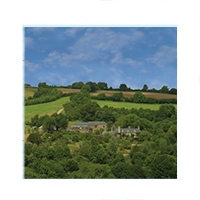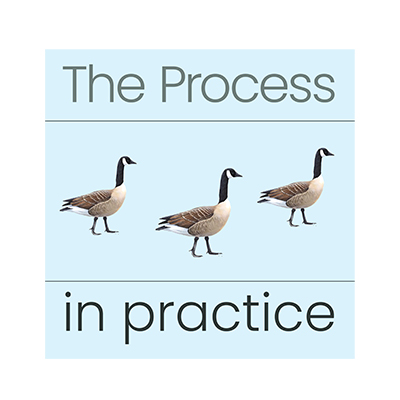Overview
Cathartic release, and other bioenergetic work helps to acknowledge, express and transform strong emotions which may have previously been denied. In expressing emotions like anger or disappointment in this way, we release them from being ‘held’ in the body, rather than suppressing them. We use our body and our voice to express what we no longer want.
The more deeply we move into expression, the more space we clear. This creates room to allow us to experience forgiveness and compassion.
Release work also allows us to feel calm, and able to deal with situations in a better-resourced manner. It can stop us taking our ‘stuff’ out on others too!
Cathartic release on the Process
Of all the exercises on the Process, the ‘bashing’ is often the one that stands out for people. It’s a powerful and pivotal experience in the Process week.
During the bashing, you used your voice and bat to express and tell your story – to speak out loud about what happened to you when you were a child; what you felt, how it hurt you then, all the ways it is hurting you now, how it is messing up your life. You released you sadness, your hurt, your anger, outrage, disappointment, your upset. You disconnected from the patterns, you told each parent that the patterns were theirs and you didn’t want them! In so doing, you claimed your power and freedom.
Do you remember what it felt like, to release all these emotions and speak out all the hurt? How did you feel during the bashing session, and how did you feel afterwards?
Free will, choice and taking action
It may have been that at the start of the cathartic release session you didn’t feel that you had much to release. This is very common. There’s no need to wait for a specific feeling – it can be helpful to start trying to express things even when you don’t know what you have to express yet. Start by trying to move the body and express things via your voice, even if it feels like you are pretending at first. Gradually the emotions will come up and be expressed, the movement will shift things. Once you start using your voice, as on your Process, you may be surprised by what comes out.
It’s not all about anger!
You may have been told on your Process that anger is not a primary feeling. Anger is a reaction to a primary feeling, usually of being hurt. Hurt feelings come from criticism, fear, rejection, humiliation, and abandonment. Many of us learnt to jump right over the hurt to anger. Or to get stuck in the hurt and sense of victimhood, not reaching the anger.
A key element of cathartic release work, such as bashing, is that it can create boundaries – it separates you from your internalised mother and father. It frees you from the hurts you feel in the moment, so that a space opens up in which you can tap into compassion and calmness, so that you can feel free to move on without these angry emotions, and when needed, can deal with the situation from a calm and steady place, minus the angry charged emotion.
Using this tool Post-Process
By doing some focused cathartic release work, you are disconnecting from the need for the worst patterns you learned from your care-givers. You are not your patterns, and doing this work gives space between you and the pattern.
Bashing is just one form of cathartic release – there are other variations you can try. Please remember to use your voice – it doesn’t need to be loud, but energy moves with the voice. Any sound – even mumbling – is a form of expression. If you use words to express, use the language you spoke as a child (if that’s different to the language you use the most now) – it will have greater impact,
Remember that cathartic release, in whichever variation you choose, is not necessarily about anger. It is about empowerment, it is about joy, and it is about claiming who you are. It is about saying ‘no’ to patterns. There may be anger, but that is not the goal. The goal is expression and standing up for who you are. Saying, ‘I am not this; I am this!’
Some suggestions:
• You may want to purchase a wiffle bat (we order ours here!), write some patterns on a card, put on some loud music and bash it out, working on a few patterns at a time.
• You can beat a pillow with your fists.
• Chop wood.
• Throw rocks into the sea or a lake.
• You could rip up an old magazine or phone directory. Or whenever recycling cardboard boxes, use it as an opportunity for some bashing!
• Scribble on a huge sheet of paper, then rip it up.
• You can write the patterns on small pieces of paper, put them in your trainers and run it out, so as each foot hits the ground you bash that pattern out. We’ve also heard of cyclists putting stickers on their pedals.
• Put the volume up on some music in the car and shout and sing it out as you drive (make sure you continue to drive safely though!)
• Boxing can be a great way to bash
• Swimming, thrashing out the anger with each stroke, can be a great alternative to bashing
• Power walk, imagining the trail is paved with patterns, stamping on them as you move forward powerfully in your life
• Dance it out to loud music, shaking all the anger out of your body
• Write it all out on paper, writing till it is all out of your head and on the page, then burn it.
Remember, the method you use for cathartic release work is not that important. What is important is the intention you bring to it. Use your body and voice to release your frustration, or any other feelings you have about the pattern until you are no longer weighed down emotionally by it.
“After trauma the world is experienced with a different nervous system. The survivor’s energy now becomes focused on suppressing inner chaos, at the expense of spontaneous involvement in their lives. These attempts to maintain control over unbearable physiological reactions can result in a whole range of physical symptoms, including fibromyalgia, chronic fatigue, and other autoimmune diseases. This explains why it is critical for trauma treatment to engage the entire organism, body, mind, and brain.”
The Body Keeps the Score, Bessel van der Kolk
“Emotional competence requires the capacity to feel our emotions, so that we are aware when we are experiencing stress; the ability to express our emotions effectively and thereby to assert our needs and to maintain the integrity of our emotional boundaries; the facility to distinguish between psychological reactions that are pertinent to the present situation and those that represent residue from the past. What we want and demand from the world needs to conform to our present needs, not to unconscious, unsatisfied needs from childhood.”
When The Body Says No, Dr Gabor Maté
If you want to return to the Post Process homepage, click here.
To go back to the other Hoffman tools, click here.







